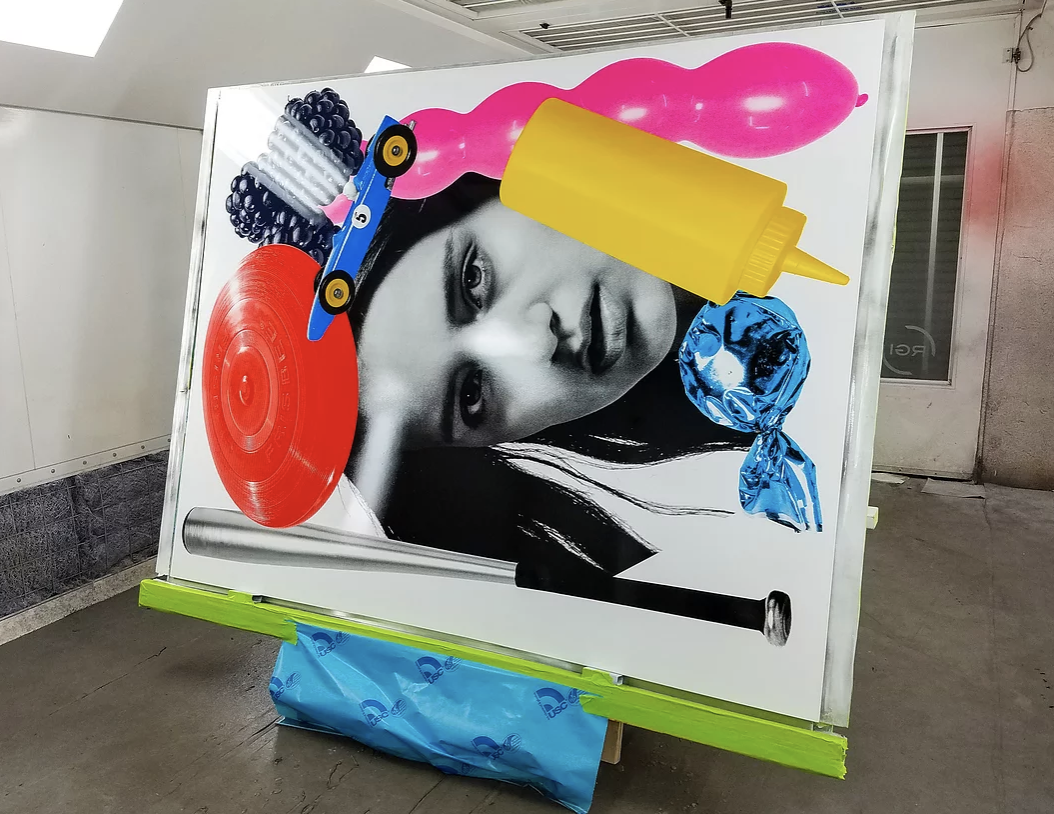By Dan Thompson | Article Provided by Coeur d’Alene Living Local
As a child growing up in small-town California, Gary Watson liked to bury treasure.
The treasures he buried were rocks, ones he painted with paint from his parents’ auto body shop. But one thing about the paint—specifically the lid of the paint can—always bothered him: It just never looked shiny.
“At a very young age I noticed that the silver and gold paint cans had a shiny top, but the paint that came out didn’t look like that. It’s still like that today,” Watson said from his home in Spirit Lake, Idaho. “I was always disappointed with the way my rocks looked compared to the cap.”
Watson went on to work in a couple different body shops, and it wasn’t until he was 30 years old—25 years after his initial disappointment—that he finally found what he was looking for: chrome paint.
“I saw a TV car show and they had a little blurb (about the paint),” Watson said. “They chromed a Nerf football … that’s what I always wanted paint to look like. I wanted it to look like the cap.”
For the last 14 years, Watson has made chrome painting a career. And for the last two of those, he has worked out of a workshop in Spirit Lake. He, Kristin (his wife) and their two sons moved up to Idaho to get away from the intensity of Los Angeles, a move that Watson said will add a decade to his life.
He was busy in Los Angeles, most certainly. Watson is one of the best—perhaps the best—chrome painters in the world. No longer burying hand-painted rocks in the dirt, Watson now has work displayed on six different continents in personal or public showrooms, including the Guggenheim in New York City.
None of the pieces start as his own, which is what might be odd about the work he does. Artists will send him projects—like the 3-foot-tall melting blow pop he received from artist Desire Obtain Cherish—for him to paint for them. He does so, sends them back, and the artist sells or displays them, often not crediting him (though D.O.C. does) for the work he did, which is all part of the deal.
That becomes the trouble, too, with self-promotion, because Watson isn’t usually allowed to post photos or take credit for the work he does. He relies on a whisper-quiet word of mouth to find work—or by working with the same clients time and again.
A painter at heart, Watson has carved out another niche: 3-foot tall sculptures, painted in chrome, to look like superheroes. He had one in his workshop that was ready: an Ironman statue, from which he gently eased off the chest plate and other pieces. This will go to the family collection of the late Stan Lee, creator of Marvel Comics. This replica will tour various comic conventions across the world, Watson said.
“I’m a car guy, and about 10 years ago somebody sent me a Silver Surfer comic statue, and that’s what got the ball rolling with these comic book statues,” Watson said. “They’re not toys. … These are man-cave pieces.”
Expensive ones, too. Each one is worth thousands of dollars. Watson estimates he has made thousands of such statues.
The process of chroming a surface is really just painting, but there’s little room for error if it’s going to look perfect at the end. Watson starts by applying a white base coat of automotive paint. If he touches it or gets any specks on it, imperfections can’t be polished out.
They need to dry for 24 hours, and then he adds a water-based chrome paint—there’s actually no chromium or any other heavy metals in it—and from there he can add colored paints on top of it, which is how he can get all the tones in the Ironman statue.
Watson grew up working in a body shop, which meant he did lots of painting. That became a skill that made him particularly well-suited for working with chrome. The transition to full-time work went well. Within six weeks of giving this work his full-time attention, in 2005, a producer from MTV called to see if he could paint the car on “Pimp My Ride.”
Then, a few years later, Watson learned about a Ford Motor Company project called the Dollar Car. The concept is that Ford will sell a car for $1 so long as they can use it promotionally. In addition to its line of drag-racing cars, Ford also had a program for custom cars, so Watson put in a proposal for a Mustang GT. Ford chose it, and his car won Best in Show for Outstanding Achievement in Design—out of 4,800 participants—at the 2010 SEMA show in Vegas.
Those two spotlights led to lots more work, he said, and he’s been busy ever since. But eventually, he and his family were ready for a quieter life, so they moved to Idaho.
The rat-race of Los Angeles was killing me,” Watson said. “I knew cars weren’t going to follow me, but the comic book statues and the artwork, nine times out of 10, it shows up in the mail.”
So far, that plan has worked just fine. Watson has a skill that very few people have at the level he has it. He is also looking to create projects of his own, start to finish, and the last couple years he has worked on a few different ideas in the hopes of finding a niche, art that, when asked about it, he can answer, “Yes, I made that,” rather than just “Yes, I painted that.”
“I’m trying to create my own artwork, but anything you see here is manufactured,” he said inside his workshop. “My claim to fame is paint. I’m a painter.”
Right now he has settled on chroming items from nature. He held up a section of bark, about a foot square and 2-inches deep, the bark’s surface painted in chrome.
“The concept is man always trying to make things perfect and flawless and even willing to mess with nature, so it’ll be this combination of something man made with natural,” Watson said.
He is also enjoying the space he has in Idaho, a 10-acre plot where he is raising chickens and experimenting with rock gardens and other outdoor pursuits, as he continues to fuel his passion through his painting in the workshop a few yards away.
“I can’t say how much I love it here,” he said. “The lifestyle, it’s just incredible.”


